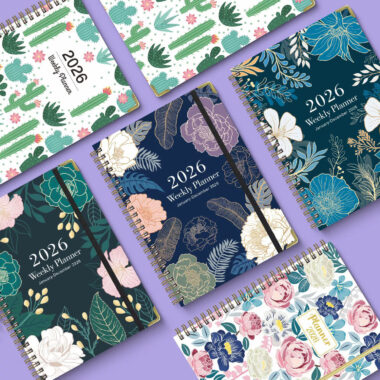Classmate-Style Notebooks: Durability, Ruling, and School Standards
Introduction
Classmate-style notebooks are among the most recognized formats in the global stationery market, especially in the education sector. Known for their durability, clear ruling, and compliance with school standards, they have become a staple product for students at all levels. For B2B buyers sourcing for retail, educational institutions, or government tenders, understanding the specifications of Classmate-style notebooks is key to securing repeat orders and meeting buyer expectations.
Durability: Built for Everyday Use
Students use notebooks heavily—carrying them in bags, flipping through pages multiple times a day, and writing extensively. This means durability is a top priority for Classmate-style notebooks. Common durability features include:
-
Sturdy covers: Laminated or hard card covers to resist bending and moisture.
-
Strong binding: Spiral or stitched binding to withstand daily handling.
-
Quality paper: Medium to high GSM paper that resists tearing under heavy writing pressure.
Educational suppliers often highlight durability as a key selling point, especially for institutions aiming to reduce costs by minimizing replacements during the academic year. An experienced Classmate Notebook Supplier can provide multiple binding and cover options to meet regional market needs.
Ruling Formats: Aligning with Learning Needs
Ruling is another critical factor in notebook design. Different school levels and subjects require different ruling styles:
-
Single line ruling: Standard for middle and high school students.
-
Double line ruling: Common in primary education to guide handwriting practice.
-
Square ruling: Preferred in math and science for precise calculations and diagrams.
Retailers and wholesalers sourcing from a reliable Notebook Supplier can access a variety of ruling patterns and paper qualities to suit different age groups and curricula.
Compliance with School Standards
Many schools and education boards specify requirements for notebooks used in their systems. These standards may include:
-
Page counts (commonly 160–200 pages per book).
-
Paper GSM to ensure no ink bleed-through.
-
Margins and ruling formats aligned with handwriting curricula.
-
Eco-certifications, such as FSC paper or recycled content, for institutions with sustainability mandates.
Meeting these standards ensures that notebooks are approved for institutional use, strengthening a supplier’s credibility in both government and private contracts.
Market Applications
-
Retail: Classmate-style notebooks are fast-moving products with consistent year-round demand.
-
Education: Schools, colleges, and training centers often place bulk orders aligned with academic cycles.
-
Corporate: Some businesses adapt Classmate-style formats for training programs or branded giveaways.
Balancing Cost and Quality
While durability and compliance are important, cost also drives purchase decisions. Buyers can reduce expenses by:
-
Selecting mid-range GSM paper (70–80 GSM) instead of premium.
-
Using softcover laminates instead of hardboard covers.
-
Standardizing page counts to streamline production.
These adjustments help maintain affordability without sacrificing key quality expectations.
Conclusion
Classmate-style notebooks continue to dominate the student stationery segment because they deliver durability, usability, and compliance with educational standards. For B2B buyers, sourcing these notebooks requires careful attention to binding, ruling formats, and institutional requirements. By partnering with a professional Classmate Notebook Supplier and a general Notebook Supplier, buyers gain access to customizable options that balance cost, quality, and long-term usability—ensuring reliable supply and strong market performance.















